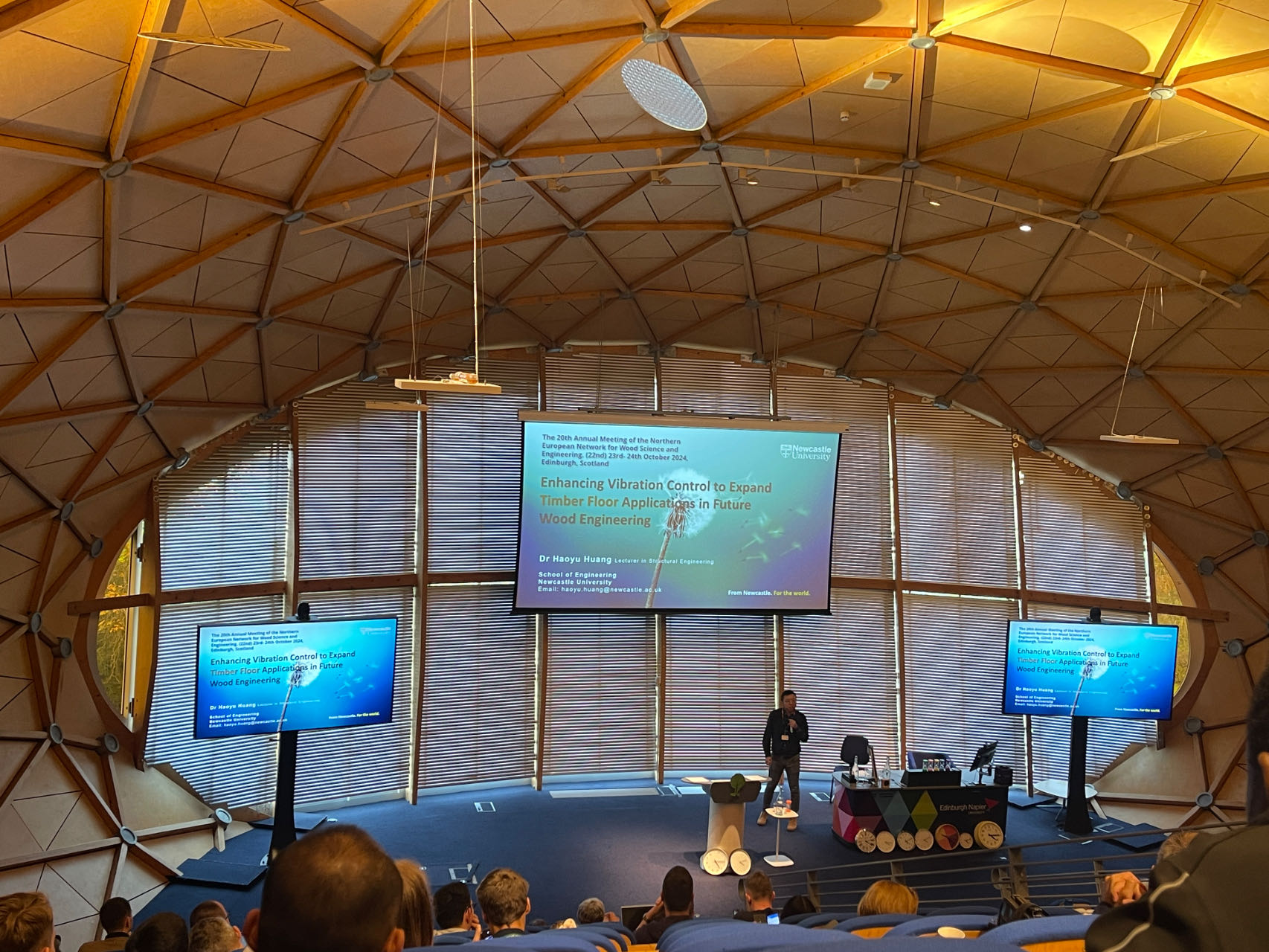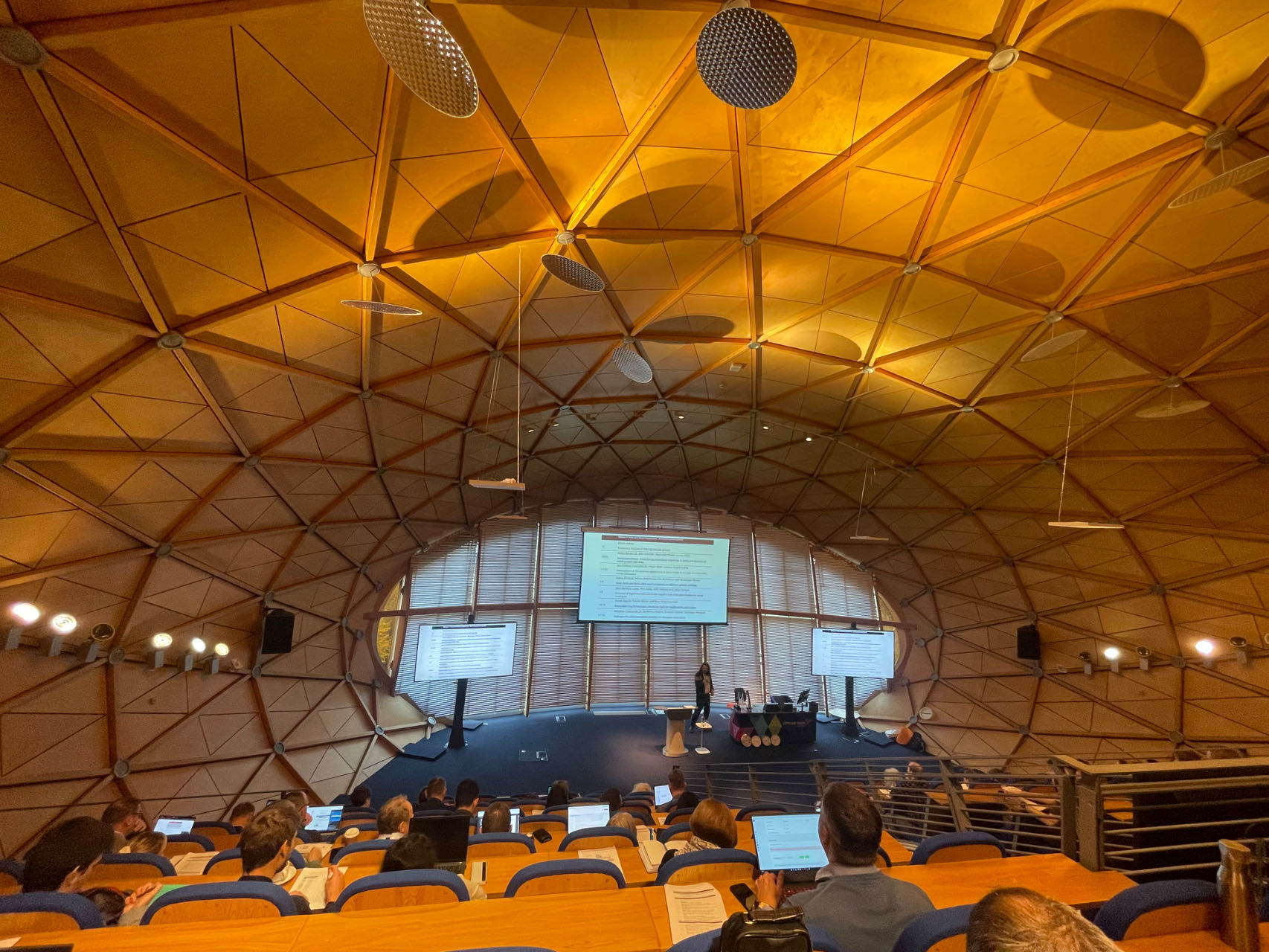The 20th Annual Meeting of the Northern European Network for Wood Science and Engineering was successfully held in 23rd- 24th October 2024, Edinburgh, Scotland. Haoyu participated in the conference and presented his latest research on Enhancing Vibration Control to Expand Timber Floor Applications in Future Wood Engineering.
Haoyu engaged in productive and insightful discussions with academics from institutions such as Edinburgh Napier University, the University of Göttingen, Nanjing Forestry University, and others. These interactions provided valuable opportunities for knowledge exchange and potential collaborations.


Abstract of the conference paper: The construction sectors account for almost 40% of global CO2 emissions. Timber floors, especially cross-laminated timber (CLT) floors, have been gaining popularity worldwide as an effective solution to reducing CO2 emissions and sequestering atmospheric carbon. However, given the lightweight nature of timber, timber floors are vulnerable to excessive vibration, especially in modern buildings designed with open spaces for flexible use. This research aimed to investigate the effect of beam–panel connections on the vibration serviceability of CLT floors and also explores the application of tuned mass damper (TMD) system to further control the vibration.
In terms of the beam-panel connections, the research variables were the size (diameter and length) of and spacing between coach screws. Cyclic tests were first conducted on specimens of beam–panel connections with varying screw sizes. Then, the results were used to establish and verify a numerical model of a full-scale CLT floor, referring to experimental results of previous research. The vibration performance of floors with different screw configurations was analysed, and a theoretical model that considers beam–panel connections was proposed to estimate the fundamental natural frequency of the CLT floor. The following conclusions were drawn: The size of screws had limited influence on the fundamental natural frequency and damping ratio of the floor. Reducing the spacing between screws increased the fundamental natural frequency of the floor system by 4.3%, corresponding to an 8.8% increase in the effective stiffness. Reducing the spacing between screws is an effective way to improve floor serviceability. By reducing the spacing between screws from 1400 mm to 181 mm, the VDV decreased by 38.3%. Finally, a process of CLT floors serviceability design was proposed. VDV can be predicted based on weighted peak acceleration response. Various factors, such as the property and boundary conditions of floors, and the human-induced excitation were considered.
Regarding the control of vibration in timber floors, this study has developed a multi-TMD (MTMD) system aimed at mitigating human-induced vibrations on CLT floors. We designed two different 3-TMD systems and a 5-TMD system, each tailored to be effective within specific frequency bandwidths. The findings indicate that the 5-TMD system is the most effective at reducing human-induced vibrations, such as those caused by activities like slow walking by one or two people, fast walking, and running, due to its ability to cover a broader frequency range. Moreover, when the loads on the CLT floor varied, the SMA-based 5-TMD system demonstrated significant robustness, successfully maintaining low response levels. This study demonstrates that using TMD systems effectively reduces vibrations in timber floors, potentially encouraging their use in modern construction. These advancements expand timber floor applications in future wood engineering, promoting sustainable construction practices and reducing CO2 emissions.
